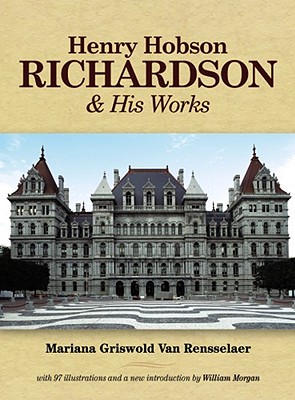
Henry Hobson Richardson and His Works (Dover Architecture)
Description
Although he was known in his own time as a leader of the so-called Romanesque Revival, the American architect Henry Hobson Richardson (1838-86) is today regarded as one of the pioneers of modern architecture -- a man who, in the words of Lewis Mumford, "created out of a confusion which was actually worse than a mere void the beginnings of a new architecture."
This appreciative presentation of his life and work, first published two years after Richardson's death, is the foundation of all research on the subject; it includes plans, photographs, and detailed discussions of all of Richardson's major buildings -- churches, commercial and civic structures, railroad stations, libraries, dwelling houses and other forms of architecture in American cities and towns from Boston to St. Louis. These buildings reveal the qualities in Richardson's work that made him both a prophet of culture and a remnant of the past -- his assimilation of the Romanesque style, the functional disposition of the parts in his buildings and expressive use of materials, and especially the use of the windows as an integral part of the interior development rather than of the fa ade alone.
The author begins with Richardson's biography -- his family background, his childhood in Louisiana, his studies at Harvard and at L' cole des Beaux Arts in Paris, his professional establishment, first in New York and then in Brookline, Massachusetts, and his public and personal life. This section includes many extensive quotations from Richardson's letters and from the writings of friends.
The remaining two thirds of the book are taken up with examinations of Richardson's work. There are chapters on his early work (with detailed attention to his first commission, the Church of the Unity in Springfield, Massachusetts); his first great work, Trinity Church in Boston; works of middle life, such as the Cheney Building in Hartford and Harvard's Sever Hall; the New York State Capitol in Albany; Albany City Hall, the Harvard Law School, and other works of his later years; the Pittsburgh Courthouse and his plans for the proposed Albany Cathedral; the Field Building in Chicago and the Cincinnati Chamber of Commerce; railroad stations and dwelling houses in Washington, St. Louis, Chicago, Buffalo, and many smaller cities. After appreciative chapters on Richardson's characteristics as an artist and his methods of teaching, the book concludes with an appraisal of his influence on the architectural profession and on the public.
